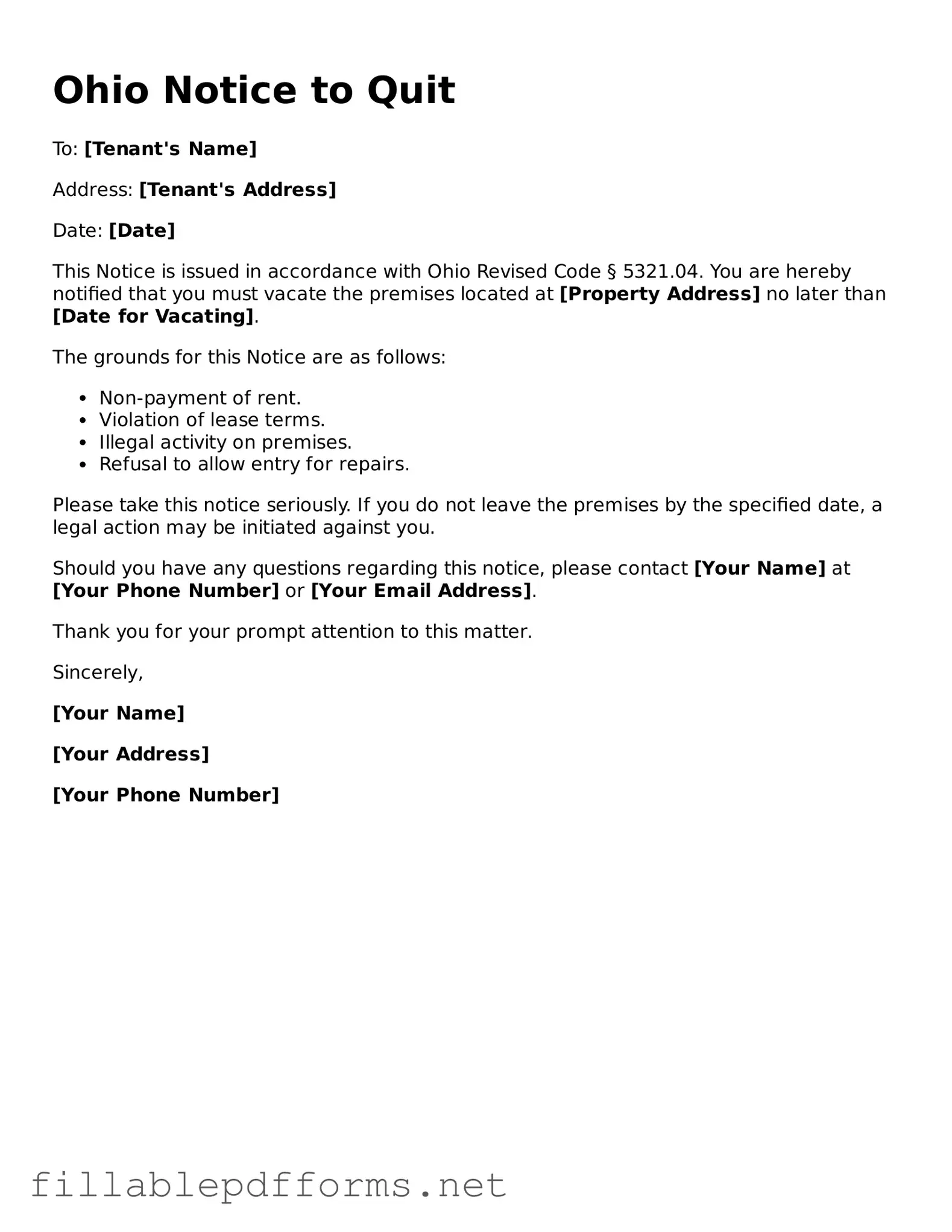Attorney-Verified Notice to Quit Form for Ohio State
The Ohio Notice to Quit form serves as a formal notification from a landlord to a tenant, indicating the need to vacate a rental property. This document plays a crucial role in the eviction process, ensuring that tenants are aware of their obligations and the potential consequences of non-compliance. Understanding this form is essential for both landlords and tenants to navigate the complexities of rental agreements in Ohio.
Launch Editor Here
